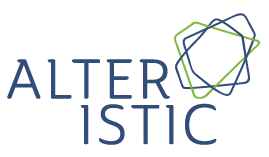Communicating our Values
bout six months ago, I wrote a blog about the importance of making our inward-facing value of intolerance for interpersonal violence our outward-facing value. I stated that in order to shift social norms, “I Will Always Pick Proactives.” Proactive bystander behaviors are all the things we say and do to communicate that: (1) interpersonal violence is not okay and (2) everyone is expected to do their part to help. This is still true. Expanding the role of the bystander to include a strong proactive component is a requirement for primary prevention, and the purpose of primary prevention is to keep people from ever being hurt. Admittedly though, six months feels like a lifetime ago and now I’m left with a new question – what does it look like to communicate our values when our lives have fundamentally changed?
COVID-19 has wrought destruction across the globe, and while I’ll posit none of us are thriving, there are certainly some folks who have drawn the shortest straws. While some of us are trying to navigate what it looks like to work from home, others have fully lost their jobs. While some of us have lost vacation plans, others have lost loved ones. While some of us have gone through the entirety of Netflix’s catalogue to try and maintain some semblance of sanity during stay-at-home orders, others are forced to stay-at-home with abusive partners. The need to proactively communicate our values around addressing interpersonal violence continues to exist. One public health crisis does not negate another. Quite the contrary, our most vulnerable populations are now not only at risk for increased harm from interpersonal violence, but are at greater risk for health concerns due to the coronavirus.
As a person who is able to prioritize proactively communicating my intolerance for interpersonal violence during the chaos of a pandemic, I continue to do so in the ways that I can: I post on social media, I include relevant points in casual conversations, and I check-in and stay connected with my friends and family. But I am still left with the same question – when the world changes, we are forced to change with it and what does it look like to communicate our values when our lives have fundamentally changed?
If you’ve participated in a training with folks from Alteristic, you know that two of our core values are authenticity and hope. So, in the spirit of authenticity, I want to invite you behind the curtain. I’ve presented my central question because, over the past month or so, it’s one we’ve wrestled with as a team. We serve our community by doing our due diligence to implement best practices in the field of prevention, and that means we’ve had to ask ourselves some difficult questions. When the world changes, we’re required to change with it, and as prevention practitioners that means scrutinizing our work and connecting to the human stakes of what we do. If the world changes and we do not change how we implement prevention strategies, then as a field we’ve failed.
So, what about hope? For two years, when I’ve talked about my journey with hope in the training room, I’ve talked about how privileged I am to be connected to a team that holds me accountable in this work, a team that would immediately pivot when the field needed it. I never thought I’d so quickly see my team challenged to do just that. This isn’t a weight we can carry alone though. As prevention practitioners, we are all required to step up to this task, because there is a human cost to this work and we cannot afford to fail.
So, what does it look like to communicate our values when our lives have fundamentally changed overnight? Truthfully, I don’t have a definitive answer quite yet. But at Alteristic, we are working on figuring it out.






